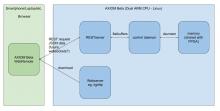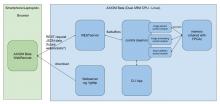How should we save parameters for the WebGUI?
Things like preset values, button layout (once its customize able) and user settings.
We could save it in camera but this would mean different people would overwrite each others settings.
Or we save it locally (eg. in browser cookies)?
Thoughts?

